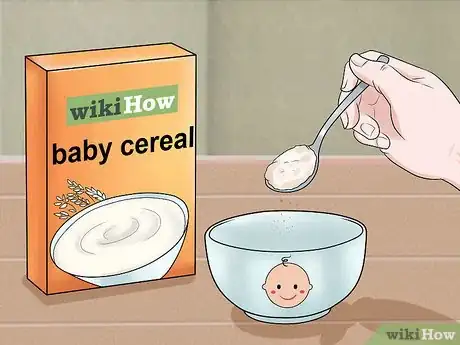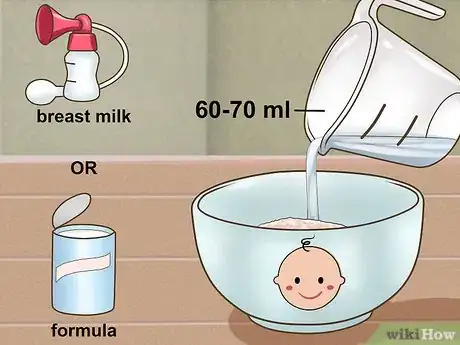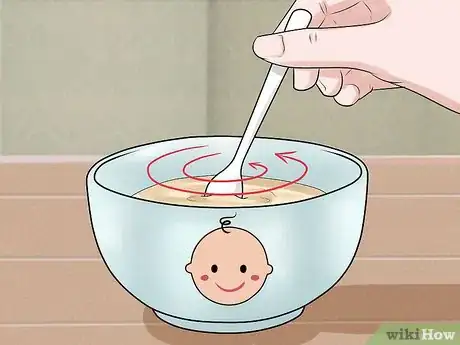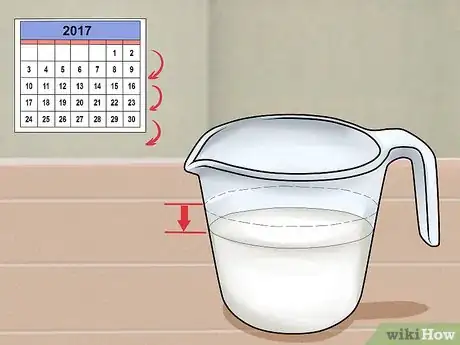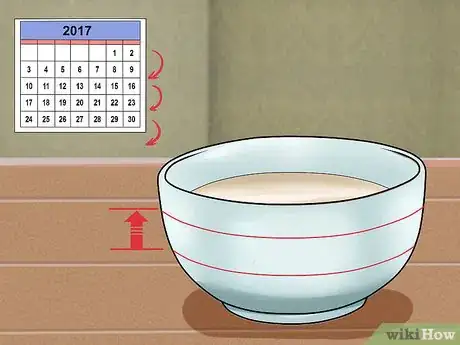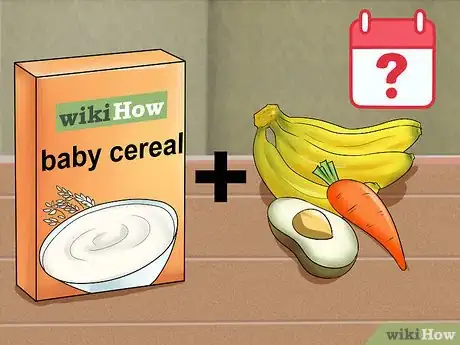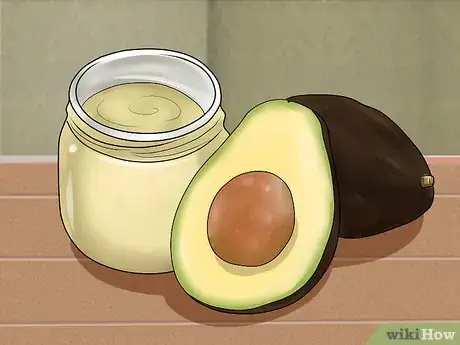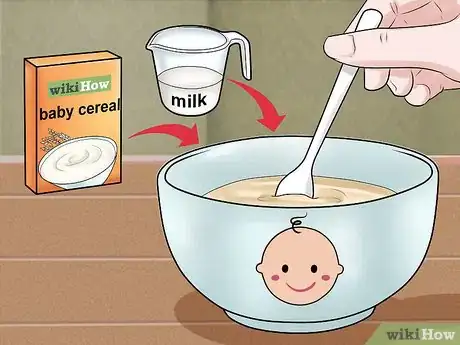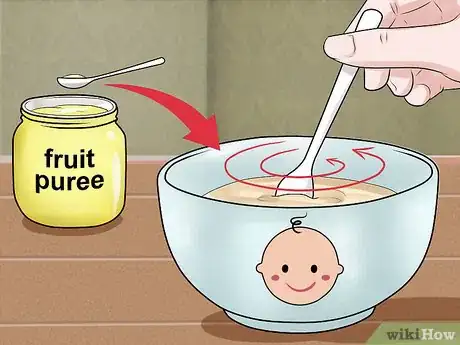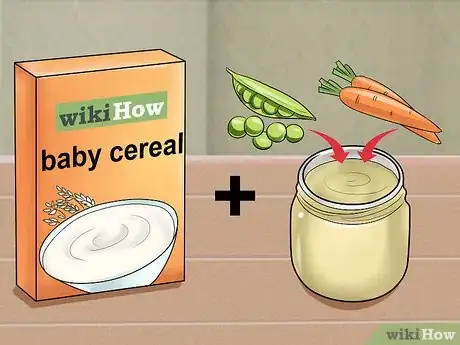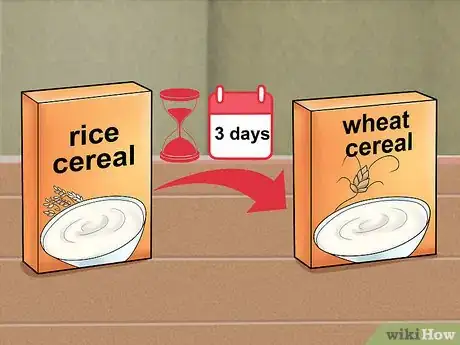This article was co-authored by Andrea Rudominer, MD, MPH and by wikiHow staff writer, Jessica Gibson. Dr. Andrea Rudominer is a board certified Pediatrician and Integrative Medicine Doctor based in the San Francisco Bay Area. Dr. Rudominer has over 15 years of medical care experience and specializes in preventive health care, obesity, adolescent care, ADHD, and culturally competent care. Dr. Rudominer received her MD from the University of California, Davis, and completed a residency at the Lucile Packard Children's Hospital at Stanford University. Dr. Rudominer also has an MPH in Maternal Child Health from the University of California, Berkeley. She is a Member of the American Board of Pediatrics, a Fellow of the American Academy of Pediatrics, a Member and Delegate of the California Medical Association, and a Member of the Santa Clara County Medical Association.
There are 7 references cited in this article, which can be found at the bottom of the page.
This article has been viewed 254,424 times.
Introducing solid foods into your baby's diet is a big milestone. Once you've talked with your baby's pediatrician, you can offer your baby a single grain cereal mixed with breast milk or formula. The cereal should be really runny when you first offer it, but once your baby has gotten used to eating it, you can make the cereal thicker. You can also begin to stir in pureed fruits and vegetables, so your baby gets extra nutrition and flavor.
Steps
Mixing Cereal with Water, Breast Milk, or Formula
-
1Put a small amount of baby cereal into a bowl. Once you've chosen a baby cereal (like rice cereal), put about 1 tablespoon (2.5 g) of it into a bowl. You'll want to start with a small amount.[1]
- Since you'll be feeding your baby with a spoon and dipping it into the cereal bowl, you'll introduce bacteria that could grow over time. This is why you shouldn't store and reuse prepared cereal.
-
2Add a little liquid to the cereal. Pour about 4 to 5 tablespoons (60 to 75 ml) of liquid into the cereal in the bowl. You should use either breast milk or baby formula, depending on what your baby is used to.[2]
- If you don't have breast milk or baby formula, you can use water as long as it is clean and fresh.
- It's a good idea to talk to your pediatrician for recommendations on how to prepare the cereal.[3]
Advertisement -
3Mix the cereal and the liquid together thoroughly. Stir the liquid into the cereal so the mixture becomes very runny, like melted ice cream. Remember that your baby's reflexes may make them gag on anything that's too thick. If the cereal doesn't look runny enough, add another tablespoon (15 ml) of liquid.[4]
-
4Serve the cereal. Once the cereal is thin, you can serve it. You don't need to heat or sweeten the cereal before you offer it to your baby, but your baby may refuse the cereal if it's very cold. To warm cereal made with formula or water, just microwave it at half power for about 15 seconds. Always stir and check the temperature before offering it to your baby.[5]
- Avoid microwaving cereal made with breast milk, since this can break down nutrients in the breast milk. If you need to warm up the breast milk, place the breast milk in a bag and set it under warm, running water for a few minutes. Then you can stir it into the baby cereal.
-
5Thicken the cereal over time. Cut back on the amount of liquid you use after a couple of weeks, once you can determine that your baby's ability to swallow has improved. Reduce the amount of liquid you add to the cereal by 1 tablespoon (15 ml) every few weeks until you are using equal parts liquid and cereal.
-
6Offer more cereal to your baby over time. By six to eight months, your baby can eat anywhere from 3 to 9 tablespoons (7.5 to 22.5 g) of baby cereal throughout the day. This amount can be stretched between two to three feedings.
- Remember that your baby should still be getting their primary nutrients from breast milk or formula.
- Don't worry if your baby doesn't eat much at first. They'll likely need a little time to get used to the new food. Ask your pediatrician about how much your baby should eat at each serving.[6]
Mixing Baby Cereal with Fruit or Vegetables
-
1Decide when to offer fruits and vegetables. Your baby should be used to eating cereal mixed with formula, breast milk or water before you begin mixing fruit or vegetable purees into the cereal. Most babies can start enjoying fruits and vegetables within a few weeks after starting cereal.
- Your baby might enjoy cereal more when it's mixed with fruits or vegetables, since these will give the cereal a little flavor. The fruit and vegetables will also give important nutrients to your baby.
-
2Choose a single fruit or vegetable puree. Always use pureed fruits or vegetables when combining it with cereal. Start with a single fruit or vegetable at a time, so you can watch your baby for allergic reactions (like hives, swelling, or skin irritation).[7] Consider starting with one of these easy-to-digest foods:[8]
- Avocado
- Banana
- Sweet potato (cooked and pureed)
- Carrots (cooked and pureed)
- Pears
- Peas (cooked and pureed)
-
3Mix the cereal with the usual formula or breast milk. Combine the usual amount of cereal and formula or breast milk that your baby usually eats. It's alright if the mixture is a little thick, since the fruit or vegetable puree with thin it out a little.
- For example, a five month old baby may be eating 2 tablespoons (5 g) of cereal with 3 tablespoons (45 ml) of breast milk or formula.
-
4Stir in 1 teaspoon (5 ml) of pureed fruit or vegetable. The cereal will thin out a little and have a slight fruit or vegetable flavor. You can offer your baby any fruit or vegetable. Keep in mind that your baby might refuse a fruit or vegetable the first time, but may enjoy it the next time you offer it. Some basic starting combinations include:[9]
- Pumpkin puree with oat or rice cereal
- Applesauce with oat or rice cereal
- Pureed peas with oat or rice cereal
-
5Introduce a combination of fruits and vegetables with the cereal. Once your baby has tried a variety of fruits and vegetables, you can begin combining them with the cereal. To create a flavorful meal, you can mix a fruit and vegetable into a cereal. You can also increase the amount of puree to one or two tablespoons. Some good flavor combinations include:[10]
- Pureed peas and carrots with cereal
- Pureed green beans and mashed potatoes with cereal
- Applesauce, pureed sweet potatoes, and cereal
- Mashed banana, pureed pears and cereal
- Carrot puree, applesauce, and mango puree with cereal
Starting Your Baby on Baby Cereal
-
1Talk with your pediatrician about baby cereal. Once your baby is 6 months old, you can talk with the pediatrician about introducing baby cereal. Fortified baby cereal is a good source of iron, which your baby might begin needing at this point.[11]
- The doctor should give you specific recommendations about how much cereal to offer and how often you should give it.
-
2Wait before introducing new baby cereals. Many babies start with single grain baby cereals, usually made with rice. If your baby enjoys rice cereal, you can also offer oat, barley, or wheat cereals. Always wait three days after introducing a new food before offering another new food. This can help you identify any food allergies or sensitivities.[12]
- If three days pass with no reaction, you can safely assume that your baby does not have an allergy to the food you tried. Move to the next food, mixing it into the cereal at the same proportion and without another fruit or vegetable.
-
3Offer cereal after feeding your baby. Feed your baby a little breast milk or formula before you offer them baby cereal. Before your baby is finished eating, offer the baby cereal. Your baby will be more interested in the cereal if they're not completely full or hungry for milk.[13]
- Once your baby is done eating cereal, you can offer more breast milk or formula.
-
4Follow your baby's lead. If your baby seems disinterested in eating baby cereal from a small spoon, try offering a little bit of cereal on the end of your clean finger. If your baby still seems uninterested (cries or turns away), don't force them to eat. Your baby might prefer milk or formula for now.[14]
- You can always take a break from baby cereal and offer it again in another week or so.
- Consider making feeding a game. Try flying the spoon around like it's an airplane. Your baby might be so interested in the game, that they'll try the food on the spoon.
Expert Q&A
Did you know you can get expert answers for this article?
Unlock expert answers by supporting wikiHow
-
QuestionWhat should I ask my pediatrician if I want to introduce baby cereal to my 6-month-old?
 Andrea Rudominer, MD, MPHDr. Andrea Rudominer is a board certified Pediatrician and Integrative Medicine Doctor based in the San Francisco Bay Area. Dr. Rudominer has over 15 years of medical care experience and specializes in preventive health care, obesity, adolescent care, ADHD, and culturally competent care. Dr. Rudominer received her MD from the University of California, Davis, and completed a residency at the Lucile Packard Children's Hospital at Stanford University. Dr. Rudominer also has an MPH in Maternal Child Health from the University of California, Berkeley. She is a Member of the American Board of Pediatrics, a Fellow of the American Academy of Pediatrics, a Member and Delegate of the California Medical Association, and a Member of the Santa Clara County Medical Association.
Andrea Rudominer, MD, MPHDr. Andrea Rudominer is a board certified Pediatrician and Integrative Medicine Doctor based in the San Francisco Bay Area. Dr. Rudominer has over 15 years of medical care experience and specializes in preventive health care, obesity, adolescent care, ADHD, and culturally competent care. Dr. Rudominer received her MD from the University of California, Davis, and completed a residency at the Lucile Packard Children's Hospital at Stanford University. Dr. Rudominer also has an MPH in Maternal Child Health from the University of California, Berkeley. She is a Member of the American Board of Pediatrics, a Fellow of the American Academy of Pediatrics, a Member and Delegate of the California Medical Association, and a Member of the Santa Clara County Medical Association.
Board Certified Pediatrician & Integrative Medicine Doctor
References
- ↑ https://www.gerber.com/key-topics/introducing-foods/articles/your-guide-to-starting-solids/how-to-prepare-store-infant-cereal
- ↑ https://www.gerber.com/key-topics/introducing-foods/articles/your-guide-to-starting-solids/how-to-prepare-store-infant-cereal
- ↑ Andrea Rudominer, MD, MPH. Board Certified Pediatrician & Integrative Medicine Doctor. Expert Interview. 6 May 2020.
- ↑ https://www.gerber.com/key-topics/introducing-foods/articles/your-guide-to-starting-solids/how-to-prepare-store-infant-cereal
- ↑ https://www.gerber.com/key-topics/introducing-foods/articles/your-guide-to-starting-solids/how-to-prepare-store-infant-cereal
- ↑ Andrea Rudominer, MD, MPH. Board Certified Pediatrician & Integrative Medicine Doctor. Expert Interview. 6 May 2020.
- ↑ Andrea Rudominer, MD, MPH. Board Certified Pediatrician & Integrative Medicine Doctor. Expert Interview. 6 May 2020.
- ↑ http://www.eatright.org/resource/food/nutrition/eating-as-a-family/dos-and-donts-for-babys-first-foods
- ↑ http://wholesomebabyfood.momtastic.com/combos.htm
- ↑ http://wholesomebabyfood.momtastic.com/combos.htm
- ↑ https://www.ucsfbenioffchildrens.org/education/feeding_your_baby_solid_foods/
- ↑ https://www.babycenter.com/0_age-by-age-guide-to-feeding-your-baby_1400680.bc
- ↑ http://www.marchofdimes.org/baby/the-basics-starting-your-baby-on-solid-foods.aspx#
- ↑ http://www.marchofdimes.org/baby/the-basics-starting-your-baby-on-solid-foods.aspx#
- ↑ https://www.ucsfbenioffchildrens.org/education/feeding_your_baby_solid_foods/
About This Article
To mix baby cereal, start by putting about 1 tablespoon of the cereal in a bowl. Then, pour 4-5 tablespoons of water, breast milk, or baby formula in the bowl and stir everything together so it's thoroughly combined. Once your baby is used to eating cereal mixed with liquids, which usually takes a few weeks, you can try mixing a single fruit or vegetable puree in with the cereal, like avocado, banana, carrots, or pears. To add the fruit puree, just stir 1 teaspoon of it into the cereal mixed with water, breast milk, or formula. To learn how to introduce your baby to cereal, scroll down!
